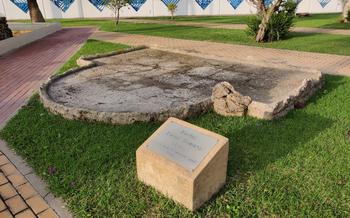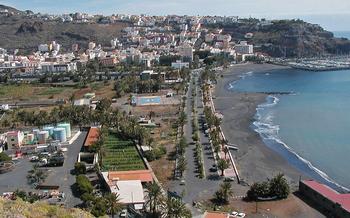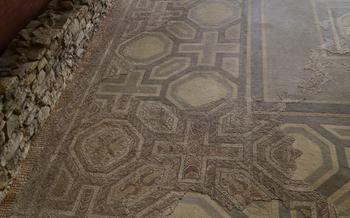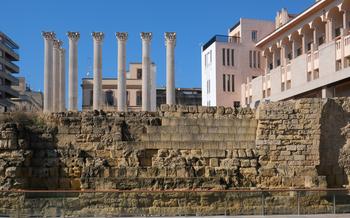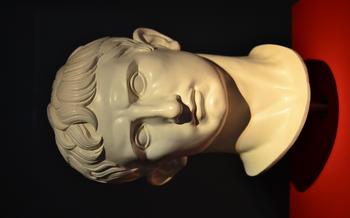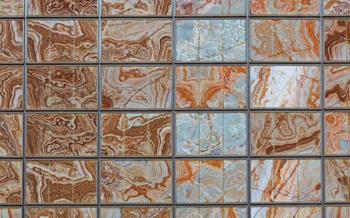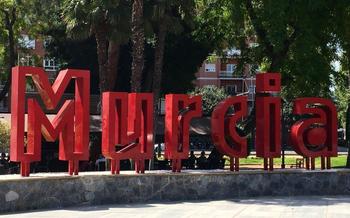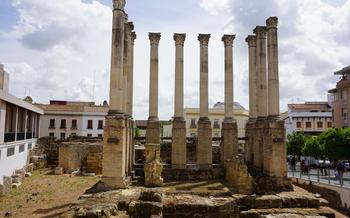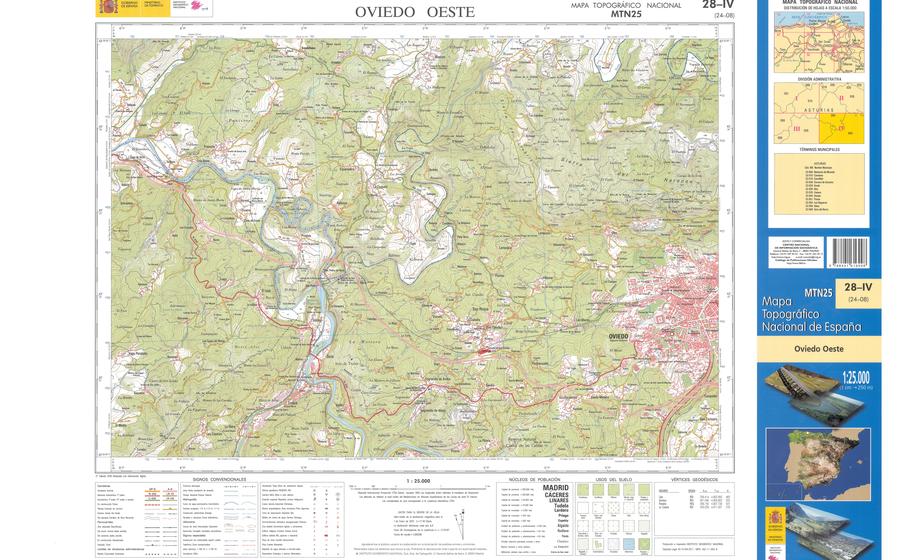
Villa Romana de Veranes
- Historical Background
- Thermal Baths
- Residential Quarters
- Culinary Delights
- Water Management System
- Religious Practices
- Educational and Cultural Activities
- Trade and Commerce
- Anecdote
- Political and Administrative Center:
- Impact on Modern Society
- Visitor Information:
- Insider Tip:
Historical Background
The Villa Romana de Veranes is a remarkably preserved ancient Roman villa situated in the verdant landscapes of Asturias, Spain. This archaeological treasure offers a fascinating glimpse into the lives of the Romans who once inhabited this region. The villa is believed to have been constructed in the 1st century AD by a wealthy Roman family and served as their opulent country estate. Its impressive scale and intricate design showcase the architectural prowess and luxurious lifestyle of the Roman elite.
The surrounding area holds significant archaeological importance as several other Roman villas have been discovered in proximity, suggesting the presence of a thriving Roman community in the region. These discoveries have provided valuable insights into the Romanization process in northern Spain and the influence of Roman culture on the indigenous population.
Over the centuries, the Villa Romana de Veranes fell into disrepair and was eventually buried beneath the earth. It was only in the early 20th century that archaeological excavations brought this hidden gem back to light. Extensive restoration efforts have been undertaken to preserve and showcase the villa's remarkable features, allowing visitors to marvel at the grandeur of ancient Roman architecture and immerse themselves in the history of this bygone era.
Thermal Baths
The Villa Romana de Veranes also boasts an impressive bathing complex, providing a glimpse into the Romans' sophisticated bathing culture. The baths were divided into three sections: the frigidarium (cold room), the tepidarium (warm room), and the caldarium (hot room).
In the frigidarium, visitors would initially immerse themselves in cool water to refresh and close their pores. The tepidarium served as a transition room, allowing the body to adjust gradually to the intense heat of the caldarium. The caldarium, the hottest room, featured a heated pool and a hypocaust system that circulated warm air beneath the floor, creating a steamy environment.
The baths were not merely places for personal hygiene but also served as social and cultural hubs. Romans from all walks of life would gather in the baths to socialize, relax, and engage in philosophical discussions. Bathing was considered an essential part of Roman life, contributing to both physical and mental well-being.
The Villa Romana de Veranes' baths are a testament to the Romans' advanced engineering and plumbing skills. The intricate system of pipes and channels ensured a continuous supply of hot and cold water, while the hypocaust system provided efficient heating. The baths also featured changing rooms, massage rooms, and latrines, catering to the various needs of bathers.
Exploring the baths at the Villa Romana de Veranes offers an immersive experience, allowing visitors to step back in time and imagine the daily routines and social interactions that took place within these ancient walls.
Residential Quarters
The residential quarters of the Villa Romana de Veranes offer a glimpse into the luxurious lifestyle of its inhabitants. The villa features several rooms, each serving a specific purpose. The cubicula, or bedrooms, provide a comfortable retreat with intricate frescoes adorning the walls. The triclinium, or dining room, is where the villa's residents gathered for lavish banquets, enjoying sumptuous meals prepared in the villa's kitchen. The oecus, or reception room, served as a space for entertaining guests and conducting business.
The furnishings and decorations of the living spaces exude opulence and refinement. Marble floors, mosaic tiles, and painted walls create a visually stunning ambiance. Elegant furniture, including ornate beds, dining tables, and chairs, adds to the luxurious atmosphere. The villa's inhabitants spared no expense in creating a comfortable and aesthetically pleasing living environment.
Daily life in the villa was a bustling affair. The villa's owner, a wealthy Roman aristocrat, oversaw the management of the estate, including agricultural activities and trade. His wife and children enjoyed a life of leisure, engaging in various pursuits such as reading, music, and art. Slaves and servants tended to the household chores, ensuring the smooth functioning of the villa.
The social hierarchy within the household was clearly defined. The owner and his family occupied the highest positions, followed by the freedmen and slaves. The freedmen, who were once slaves but had been granted their freedom, often held positions of responsibility, such as managing the estate's finances or overseeing agricultural activities. Slaves performed various tasks, from cooking and cleaning to working in the fields.
Culinary Delights
Gastronomy played a crucial role in Roman culture, and the Villa Romana de Veranes offers a glimpse into the culinary practices of the ancient Romans. The villa's kitchen, with its well-preserved ovens and cooking utensils, provides evidence of the variety of dishes prepared within its walls.
The Romans were skilled in creating a diverse range of dishes, using fresh ingredients and aromatic spices. Common ingredients included wheat, barley, lentils, beans, olives, grapes, and various fruits. Meat, particularly pork and lamb, was also consumed, but was often reserved for special occasions.
One of the most important aspects of Roman cuisine was the use of wine. Wine was not only a beverage but also an essential ingredient in many dishes, adding flavor and depth to sauces, marinades, and stews. Olive oil was another staple, used for cooking, preserving food, and as a condiment.
Dining customs and etiquette were also an integral part of Roman culture. Meals were typically served in three courses: an appetizer, a main course, and a dessert. The main course often consisted of a meat or fish dish, accompanied by vegetables, bread, and wine. Desserts were typically simple, such as fresh fruit or honey-based sweets.
The Villa Romana de Veranes offers visitors a tantalizing glimpse into the culinary delights of ancient Rome. From the variety of dishes prepared in the villa's kitchen to the dining customs and etiquette observed by its inhabitants, the villa provides a fascinating glimpse into the gastronomic traditions of this ancient civilization.
Anecdote:
During a recent visit to the villa, I had the opportunity to sample some Roman-inspired dishes prepared using traditional recipes. The flavors and aromas were simply divine, transporting me back in time to the days of the Roman Empire. The lentil soup, seasoned with cumin and coriander, was particularly delicious, and the roasted pork with honey and rosemary was melt-in-your-mouth tender. It was a truly immersive experience that allowed me to taste and savor the culinary delights of ancient Rome.
Water Management System
The Villa Romana de Veranes showcases an impressive water management system that highlights the advanced engineering capabilities of the Romans. An intricate network of aqueducts and channels supplied a steady flow of fresh water to the villa, ensuring a constant supply for various purposes. The Romans' mastery of hydraulics is evident in the villa's sophisticated drainage system, which effectively channeled wastewater away from the living quarters and thermal baths, maintaining a clean and hygienic environment.
The water supply system was a marvel of ancient engineering. The Romans constructed an aqueduct that brought water from a nearby river to a large cistern located on the villa grounds. From there, a network of lead pipes distributed water throughout the villa, supplying the baths, kitchen, and other areas. The system also featured clever mechanisms for regulating water flow and temperature, demonstrating the Romans' attention to detail and comfort.
The drainage system was equally impressive. A series of underground channels and drains efficiently removed wastewater from the villa. These channels were carefully designed to prevent blockages and ensure proper drainage, contributing to the overall sanitation and hygiene of the villa.
The Romans' water management system at the Villa Romana de Veranes stands as a testament to their ingenuity and engineering prowess. Their mastery of hydraulics not only ensured a comfortable and hygienic living environment but also laid the foundation for modern water management practices.
Religious Practices
Religion played an integral role in the daily lives of the villa's inhabitants. They worshipped a pantheon of gods and goddesses, including Jupiter, Juno, Minerva, Apollo, and Venus, and a household shrine dedicated to these deities was discovered during excavations. The shrine featured a variety of religious artifacts, including altars, statues, and votive offerings, providing insight into the religious beliefs and practices of the villa's occupants.
Religious rituals and festivals were an important part of Roman society, and the villa's residents likely participated in these events to honor the gods and seek their favor. These rituals may have included sacrifices, prayers, and processions, and they were often accompanied by feasting and entertainment. Religion also influenced decision-making and daily life, as the Romans believed that the gods could intervene in human affairs and influence their fortunes.
Anecdote:
During the excavation of the villa, archaeologists discovered several curse tablets, which were thin sheets of lead inscribed with curses or spells. These tablets were often used by people to seek revenge on their enemies or to protect themselves from harm. The curses were typically written in Latin or Greek and invoked the powers of the gods to bring about the desired outcome.
Educational and Cultural Activities
At the Villa Romana de Veranes, education and cultural pursuits played a significant role in the lives of its inhabitants. Children received a well-rounded education, studying subjects such as literature, history, philosophy, and mathematics. Tutors, often Greek slaves, imparted knowledge and instilled in the young minds the values and traditions of Roman society.
The villa's library housed an impressive collection of scrolls, providing access to a wealth of knowledge and entertainment. Residents could delve into the works of renowned authors, including Homer, Virgil, and Cicero, exploring tales of mythology, history, and philosophy.
Music and art were integral to Roman culture, and the villa was no exception. Skilled musicians performed on various instruments, filling the air with melodies and rhythms. Residents enjoyed painting, sculpture, and mosaics, creating beautiful works of art that adorned the villa's walls and floors.
Various forms of entertainment were available to the villa's occupants. They could attend theatrical performances, watch chariot races, or participate in athletic competitions. Gladiatorial contests, though controversial, were also popular forms of entertainment, showcasing the prowess and courage of trained fighters.
Intellectual discussions, debates, and symposia were common among the villa's residents and their guests. They exchanged ideas, shared knowledge, and engaged in lively conversations on various topics, fostering a vibrant intellectual atmosphere within the villa's walls.
Trade and Commerce
The Villa Romana de Veranes was not just a luxurious residence but also a hub of economic activity. The villa's extensive agricultural lands provided a surplus of crops, including wheat, olives, and grapes, which were traded with other parts of the Roman Empire. The villa also had workshops where various goods were produced, such as pottery, textiles, and metalware. These products were then sold in local markets or exported to other regions.
The villa's strategic location along trade routes made it a vital center of commerce. The nearby Sella River provided a convenient means of transportation for goods and people. The villa's owners took advantage of this by establishing trade connections with other Roman settlements in the region. They also had commercial relationships with merchants from distant lands, such as Gaul and North Africa.
The wealth generated from trade allowed the villa's owners to maintain their lavish lifestyle and expand their influence in the region. The villa became a center of economic power and prosperity, attracting skilled artisans, merchants, and traders from all corners of the empire.
Anecdote
During an excavation at the villa, archaeologists discovered a collection of well-preserved amphorae, large ceramic jars used for transporting liquids. These amphorae had inscriptions indicating that they contained wine from a vineyard in southern Italy. This discovery suggests that the villa's owners imported wine from other regions to cater to their refined tastes and to trade with their wealthy neighbors.
Political and Administrative Center:
The Villa Romana de Veranes served as a vital political and administrative center in the Roman province of Hispania Tarraconensis. The villa's owner, a wealthy landowner, played a crucial role in local governance and administration. As part of the Roman elite, he held significant political and economic power. He was responsible for collecting taxes, maintaining order, and representing the interests of the local community to the provincial authorities.
The villa functioned as a microcosm of the Roman Empire's political and administrative machinery. The owner's household, which included slaves, freedmen, and dependents, formed a miniature bureaucracy responsible for managing the estate's affairs. This household administration mirrored the larger administrative structures of the Roman Empire, demonstrating the villa's role as a hub of local governance.
Moreover, the villa's strategic location allowed its owner to maintain close ties with the provincial authorities. Situated along important trade routes, the villa served as a meeting point for local officials, merchants, and travelers. Through these connections, the villa's owner was able to influence local policies, participate in decision-making, and ensure the well-being of his community.
The Villa Romana de Veranes thus played a pivotal role in the political and administrative structure of the Roman Empire, reflecting the power and influence of the Roman elite at the local level.
Impact on Modern Society
The Villa Romana de Veranes has left an enduring legacy that continues to influence modern society in various ways. Its architectural design and intricate mosaics have served as inspiration for contemporary architects and designers, who incorporate Roman elements into their creations. The villa's well-preserved state provides valuable insights into ancient Roman construction techniques and artistic styles.
Ongoing archaeological research at the site continues to uncover new discoveries that enhance our understanding of Roman culture and history. These findings contribute to the broader body of knowledge about the Roman Empire and its impact on the development of Western civilization.
Preserving and showcasing cultural heritage sites like the Villa Romana de Veranes is essential for future generations to appreciate and learn from the past. By protecting these treasures, we ensure that the legacy of ancient Rome remains alive and accessible, fostering a deeper appreciation for our shared cultural heritage.
The villa's enduring fascination attracts visitors from around the world, who marvel at its grandeur and immerse themselves in its history. It serves as a reminder of the enduring power of ancient civilizations and their contributions to the world we live in today.
Visitor Information:
The Villa Romana de Veranes is open to the public and offers guided tours in Spanish and English. It is advisable to book a guided tour in advance to avoid disappointment, especially during peak tourist season. The villa is open from Tuesday to Sunday, from 10 am to 6 pm, and the entrance fee is 6 euros.
For the most enjoyable visit, plan to spend around two hours exploring the villa and its surroundings. The site is wheelchair accessible, and there are restrooms and a small gift shop available.
After exploring the villa, consider visiting the nearby city of Gijón, which is only a short drive away. Gijón offers a variety of attractions, including beautiful beaches, historic landmarks, and a vibrant culinary scene.
Whether you are a history buff, an architecture enthusiast, or simply someone who enjoys exploring new places, the Villa Romana de Veranes promises a fascinating and enriching experience. So, add it to your itinerary and prepare to be transported back in time to the era of ancient Rome.
Insider Tip:
For an unforgettable experience, plan your visit to coincide with the annual Roman Festival held at the Villa Romana de Veranes. This immersive event transports visitors back in time with authentic Roman reenactors, traditional music, and culinary delights. Immerse yourself in the atmosphere as you witness gladiatorial battles, marvel at chariot races, and savor the flavors of ancient Roman cuisine. Don't miss the opportunity to learn firsthand about Roman customs, traditions, and daily life while creating memories that will last a lifetime.
